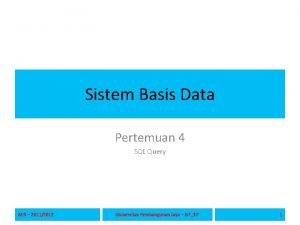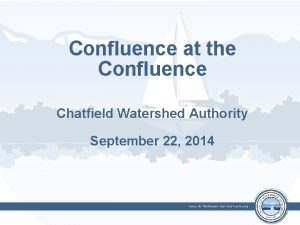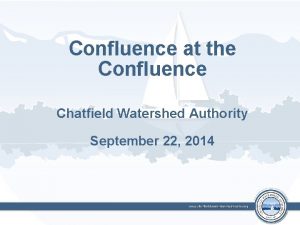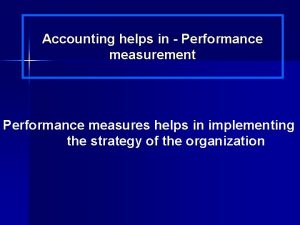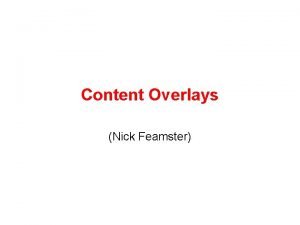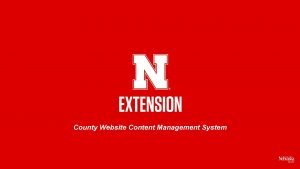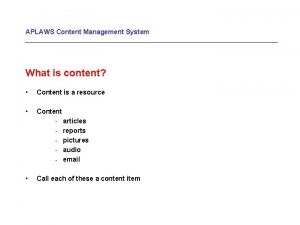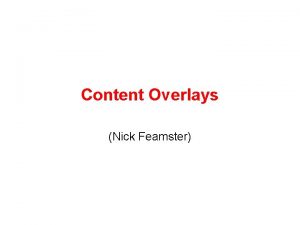Creating content in confluence Confluence helps in creating















- Slides: 15

Creating content in confluence

• Confluence helps in creating dynamic pages • One can use standard templates that are available by default or create your own from scratch • You can create documents from anywhere in the world as it sits on cloud and it can be shared with the person who is geographically separated for his inputs, which ultimately provides a central repository and the most transparent way of sharing information across team or departments.

Standard Operating Procedure for creating pages in Confluence • Its not that I am going to mention some rocket science steps that are not already being mentioned by SMEs but just a step by step process with screenshot to make understanding easier.

• Access your enterprise/ personal Confluence page by entering the registered URL to view the login page. • Enter the username and password in ‘Email address/Username’ and ‘password’ field and click ‘log in’ to view the dashboard of Confluence

Notes : On logging in , a welcome message will be displayed on the dashboard screen. Notes : Dashboard can also be accessed by clicking on Confluence icon if you are lost and it’s page is divided into three categories:

Creating Space • Space is actually the home for all the content • Creating space in confluence is very easy. One can create space for projects or personal space or maybe both depending on the requirement • Space usually consists of pages and blogs which can be aligned/moved between the spaces as and when required

SOP for creating and customizing space • Go to dashboard, click on ‘spaces’> ‘create’ • Click ‘create’ in the pop up ‘what is space’

Notes: It will display the list of standard space that one would like to create. You can select as per your preference • Select one template and click ‘Next’. • Enter the name of space in ‘space name’ and it will automatically pick up the ‘space key’ and click ‘create’ to finish the space creation process.

Notes : Once the space is created, it will look like this having its own homepage Also, it can be seen in the url that space name become part of url which can be changed as well according to the requirement https: //trialbasic. atlassian. net/wiki/display/REM/Remittance+H ome

Creating first page (1) • The best thing about Confluence is it has a very user friendly interface and it’s a smooth ride using and exploring stuff around it. • Click on ‘create’ in the header or press key ‘c’ to create a blank page.

(2) • Click on (…) three dots adjacent to ‘create’ to view the list of standard templates and get a head start immediately.

(3) • Select one of the templates and click ‘create’ to view the blueprint of the page ‘Its that simple’ to create you first dynamic page for something too ambitious to achieve’ • You can keep it private until you are not sure to share it with the team • Let’s move a little forward and see how can we write content and edit it

Writing content • Writing content in Confluence is as simple as writing in a word document Notes : As I mentioned, there are lot of templates available, for my example I have chosen product requirements

• Once the document is created, click on save and its ready to go for review or comments from other users, if allowed by the document owner. – If you want to restrict any suer to view the document, click on (…) o the top right of the page, select restrictions. – Select appropriate option ‘restrict editing/viewing’, write the name/group and click ‘save.

• Restrictions can be removed using the same way. – Just select the name and click on ‘remove restrictions’
 Carrier content and real content in esp
Carrier content and real content in esp Static content vs dynamic content
Static content vs dynamic content Geneplore model
Geneplore model Inisiasi proyek
Inisiasi proyek Aixm confluence
Aixm confluence Ecology of human performance model
Ecology of human performance model Confluence meteorology
Confluence meteorology Confluence gestalt
Confluence gestalt Confluence organigramm
Confluence organigramm Complexe zorgsituatie
Complexe zorgsituatie Confluence slac
Confluence slac Confluence sql
Confluence sql How is a delta formed
How is a delta formed Data mining confluence of multiple disciplines
Data mining confluence of multiple disciplines Office365 atlassian
Office365 atlassian Data mining concepts and techniques slides
Data mining concepts and techniques slides











